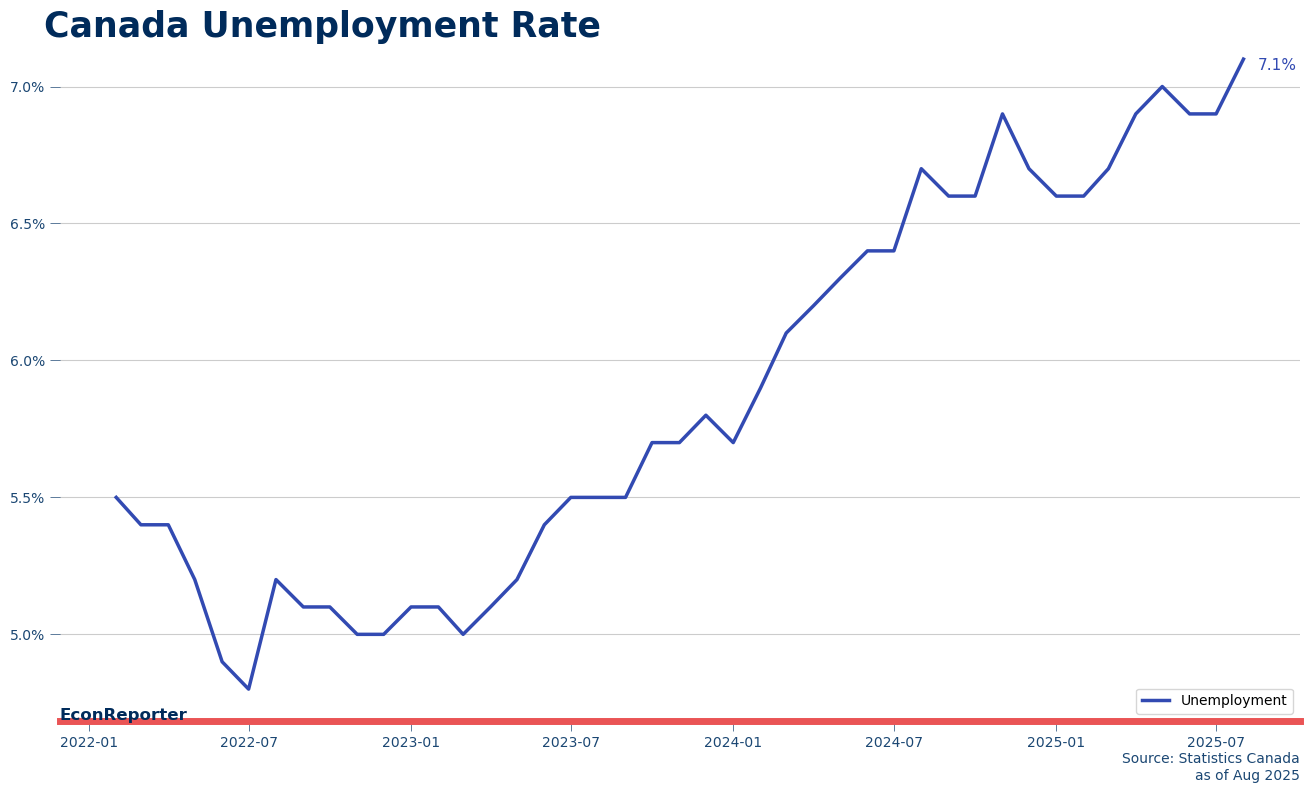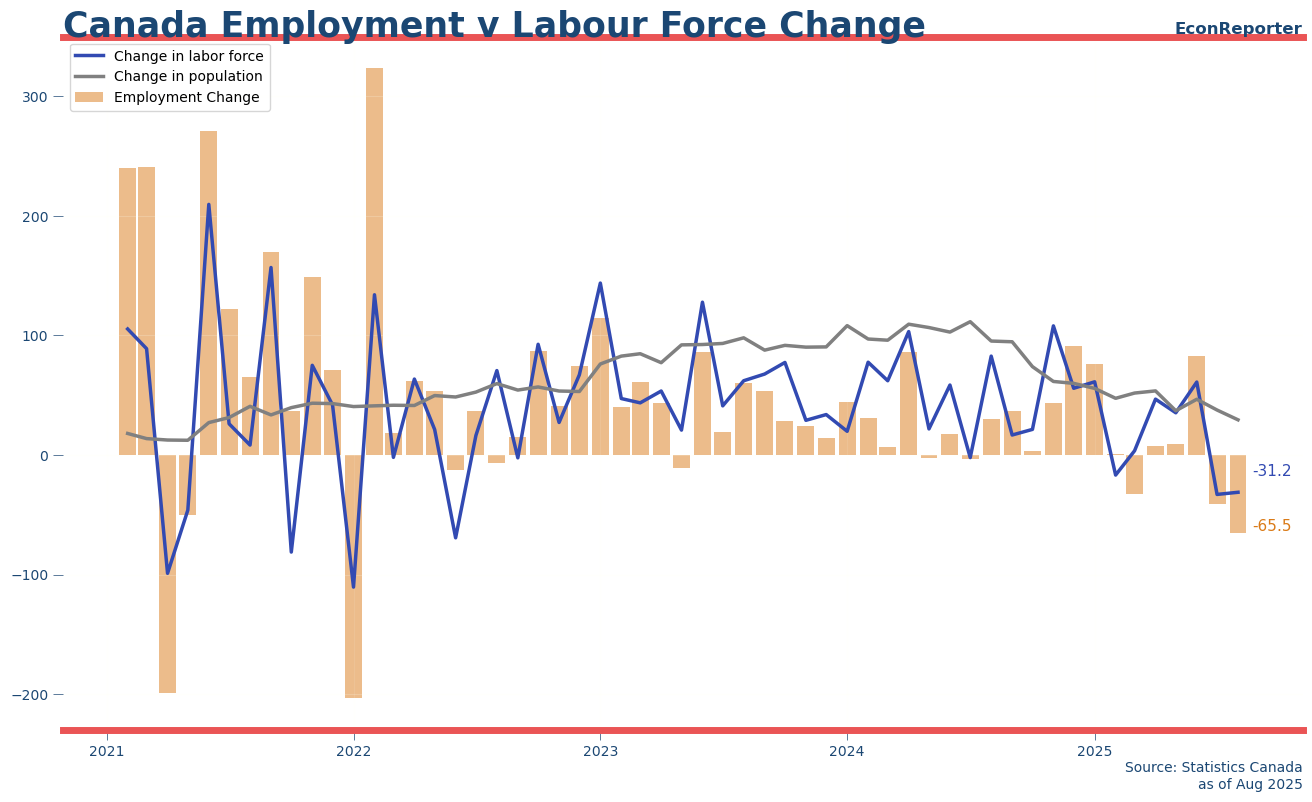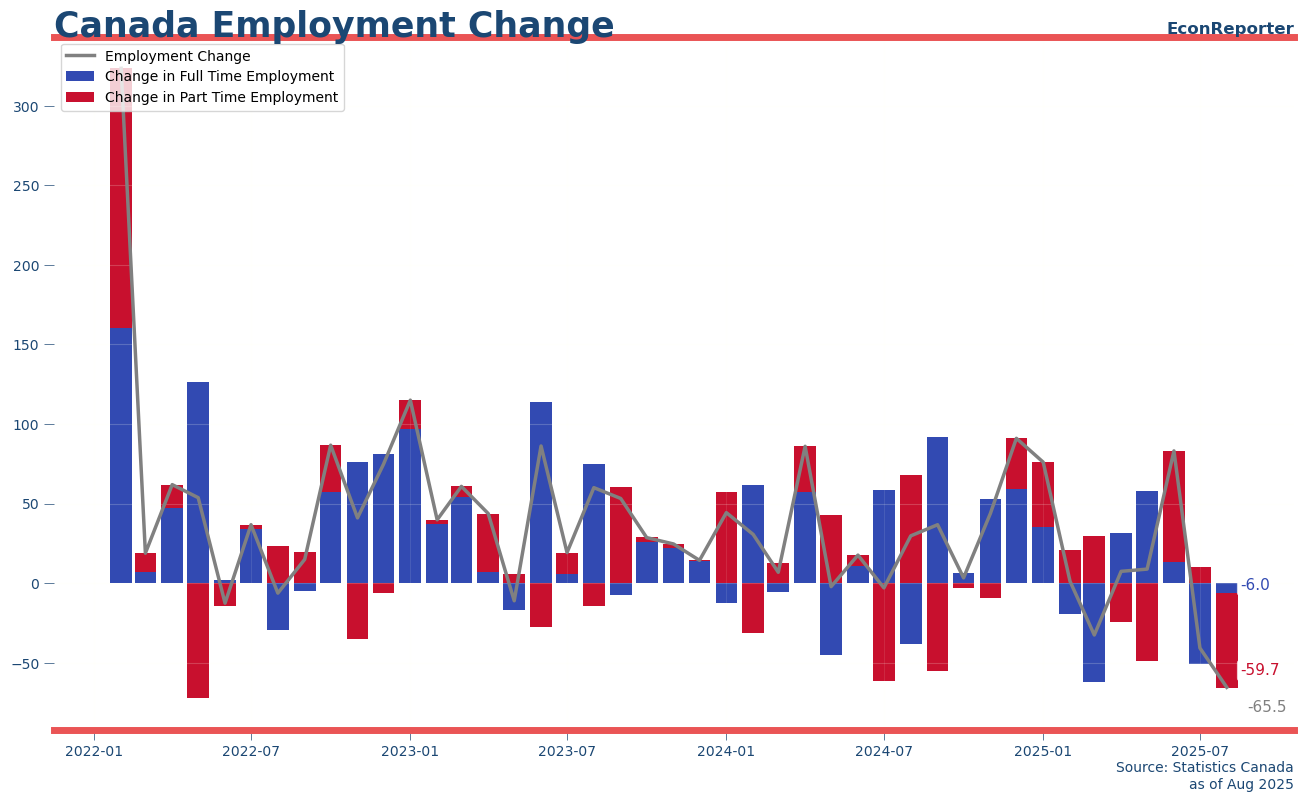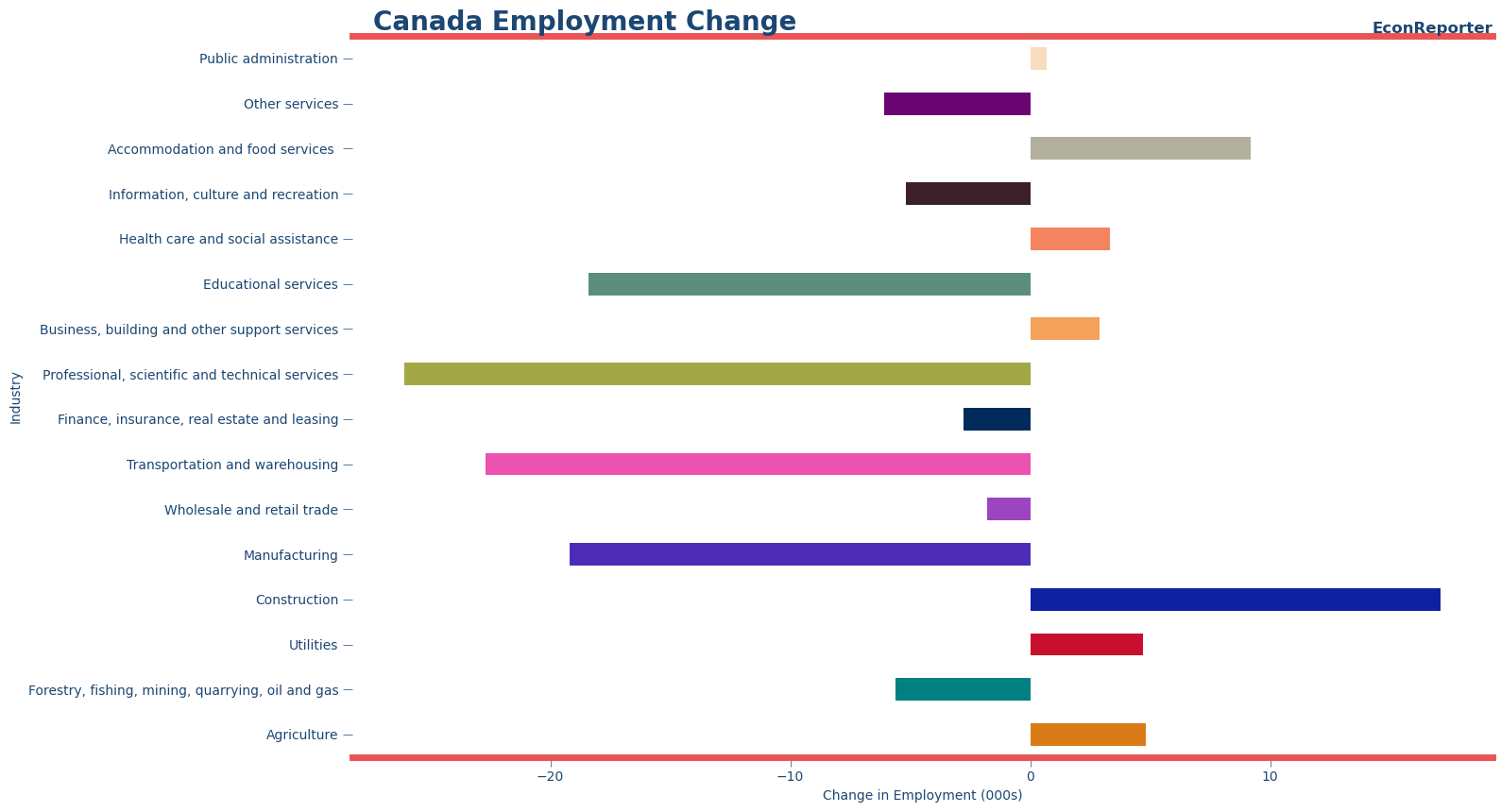The unemployment rate in Canada has risen to 7.1% in August, the highest level since May 2016 outside of the pandemic era, Statistics Canada (StatCan) reported Friday.
The surge in the jobless rate was driven by a 66,000 drop in employment in August, which followed a 41,000 decline in July. The labor force also shrank in the last two months, bringing the labor force participation rate down by 0.3 percentage points since June to 65.1%.
Full-time employment accounted for 6,000 of the total, while decline in part-time positions represented the majority of the drop at 59,700. Outside of the pandemic era, August marked the first time since Nov 2019 that job losses occurred in both full-time and part-time employment at the same month.
Professional, scientific and technical services (-26,100), transportation and warehousing (-22,700), manufacturing (-19,200) as well as education (-18,400) sectors all cut a substantial number of jobs in the month. These job losses were only partially offset by the solid employment growth in construction (17,100) and accommodation and food services (9,200) industries.
The job losses in the transportation and warehousing and education sectors mark a sharp reversal from the employment gains recorded in July, when those industries added 26,100 and 22,400 jobs, respectively.
This job report reveals an apparent weakness in the Canadian labor market that will likely drag down consumption demand—one of the few remaining bright spots in Q2 GDP report—impacting the third quarter’s economic growth.













